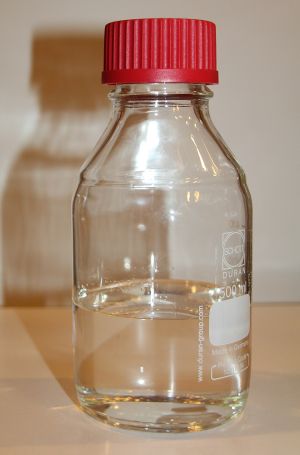Dichloromethane toxicity
Background
- Methylene chloride or dichloromethane (DCM) is a chlorinated organic solvent. It is a colorless, volatile liquid with a chloroform-like, sweet odor.
- Used in a wide range of industrial and research settings.
Routes of Exposure
- Inhalation
- Methylene chloride vapor is absorbed readily from the lungs.
- The odor threshold is 250 ppm, which is 10 times higher than the OSHA PEL (25 ppm).
- Olfactory fatigue may also occur at high concentrations.
- Methylene chloride is heavier than air and may cause asphyxiation in enclosed, poorly ventilated, or low-lying areas.
- Skin/Eye Contact
- Methylene chloride vapor can cause skin and eye irritation.
- Prolonged dermal contact may produce chemical burns.
- Methylene chloride is absorbed slowly through intact skin but not in quantities that cause acute systemic toxicity.
- Ingestion
- Acute toxic effects, including death, can result from ingestion.
Clinical Features
- CNS
- CNS depression, headache, drowsiness, lightheadedness, slurred speech, decreased alertness, slowed reaction times, irritability, impaired gait, and stupor
- Rapid loss of consciousness, coma, seizures, and death have been reported.
- Metabolic
- Methylene chloride is metabolized to carbon monoxide, causing elevated carboxyhemoglobin levels. Carboxyhemoglobin levels may continue to rise for several hours after exposure.
- The fetus is particularly vulnerable to poisoning with carbon monoxide.
- Cardiovascular
- ECG changes resembling those of carbon monoxide poisoning.
- Angina, myocardial infarction, and cardiac arrest associated with methylene chloride inhalation was reported in one patient
- No adverse cardiovascular effects from methylene chloride have been reported for occupationally exposed workers.
- Respiratory
- Airway irritation, hydrocarbon pneumonitis, pulmonary edema.
- Dermal
- Skin irritation and blistering.
- Prolonged dermal contact may result in second- and third-degree chemical burns.
- Ocular
Differential Diagnosis
Drugs of abuse
- 25C-NBOMe
- Alcohol
- Amphetamines
- Bath salts
- Cocaine
- Ecstasy
- Gamma hydroxybutyrate (GHB)
- Heroin
- Inhalant abuse
- Hydrocarbon toxicity
- Difluoroethane (electronics duster)
- Marijuana
- Kratom
- Phencyclidine (PCP)
- Psilocybin ("magic mushrooms")
- Synthetic cannabinoids
- Chloral hydrate
- Body packing
Toxic gas exposure
- Carbon monoxide toxicity
- Chemical weapons
- Cyanide toxicity
- Dichloromethane toxicity
- Hydrocarbon toxicity
- Hydrogen sulfide toxicity
- Inhalant abuse
- Methane toxicity
- Smoke inhalation injury
- Ethylene dibromide toxicity
Evaluation
Workup
- CBC
- CMP
- ECG
- Carboxyhemoglobin levels
- Carboxyhemoglobin levels of exposed patients rarely exceed 15% but may remain elevated for 1 to 2 days after exposure due to continual metabolic conversion of fat-stored methylene chloride.
- CXR: for significant inhalation exposures.
Diagnosis
- Clinical Diagnosis based on history of exposure and symptoms.
- Levels of methylene chloride in blood are not clinically useful; however, they may be used to qualitatively document exposure.
Management
- Oxygen therapy
- May consider Hyperbaric oxygen, it's use for DCM toxicity has not been studied.
- Supportive Care
Disposition
- Admit for symptoms or significant exposures.



